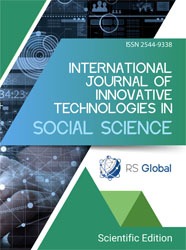PSYCHOLOGICAL PECULIARITIES OF PROFESSIONAL RESPONSIBILITY OF FUTURE SPECIALISTS OF THE CIVIL DEFENCE SERVICE
Abstract
The essence of the concept of “responsibility” and “professional responsibility of a rescuer” is revealed in the article; the psychological foundations of the development of responsible behavior are analyzed; the main ways and means that ensure the success of the process of the responsibility formation, the main pedagogical conditions for improving educational activities and the formation of responsibility among the cadets are presented.
References
Manuilov Ye. M. Moral and ethical responsibility of the agent activity / Ye. M. Manuilov // Bulletin Nat. Jurid. Acad. of Ukraine named after Yaroslav the Wise. Series: Philosophy, Philosophy of Law, Politics, Sociology / editorial board: A.P. Getman and others - Kh.: Pravo, 2011. - Edition 9. - 24–31 p.
Mill John Stewart / Encyclopedical Dictionary of Brockhaus and Efron: In 86 volumes (83 vol. І 4 additional) St. Petersburg, 1890. - 34 p.
Mokhnar L. I. The problem of the responsibility formation as the professionally important quality of the future specialists of civil defence service / L. I. Mokhnar // New Technologies of Science: Sciences. - method. collection / Institute of Innovation Technologies and Education of the Ministry of Education and Science of Ukraine. - 2015. – Edition 84. P. – 126 - 130.
Muzdybaev K. Psychology of responsibility / K. Muzdybaev. - L.: Nauka, 1983. – 240 p.
Rubinstein S. L. Fundamentals of General Psychology: in 2 volumes. Vol. II / S. L. Rubinstein. - M., 1989. – 328 p.
SavchynM.V. Responsibility: the principle of motivational regulation of behavior of personality / M. V. Savchyn // Pedagogy and psychology. - 1996. - No 1. - P. 10-18.
Spirkin A. G. Consciousness and self-awareness / A. G. Spirkin. – M.: Education, 1972. – 344 p.
Views:
449
Downloads:
386
Copyright (c) 2020 Mokhnar L. I., Fomych M. V., Diachkova O. M., Kryshtal M. A.

This work is licensed under a Creative Commons Attribution 4.0 International License.
All articles are published in open-access and licensed under a Creative Commons Attribution 4.0 International License (CC BY 4.0). Hence, authors retain copyright to the content of the articles.
CC BY 4.0 License allows content to be copied, adapted, displayed, distributed, re-published or otherwise re-used for any purpose including for adaptation and commercial use provided the content is attributed.











